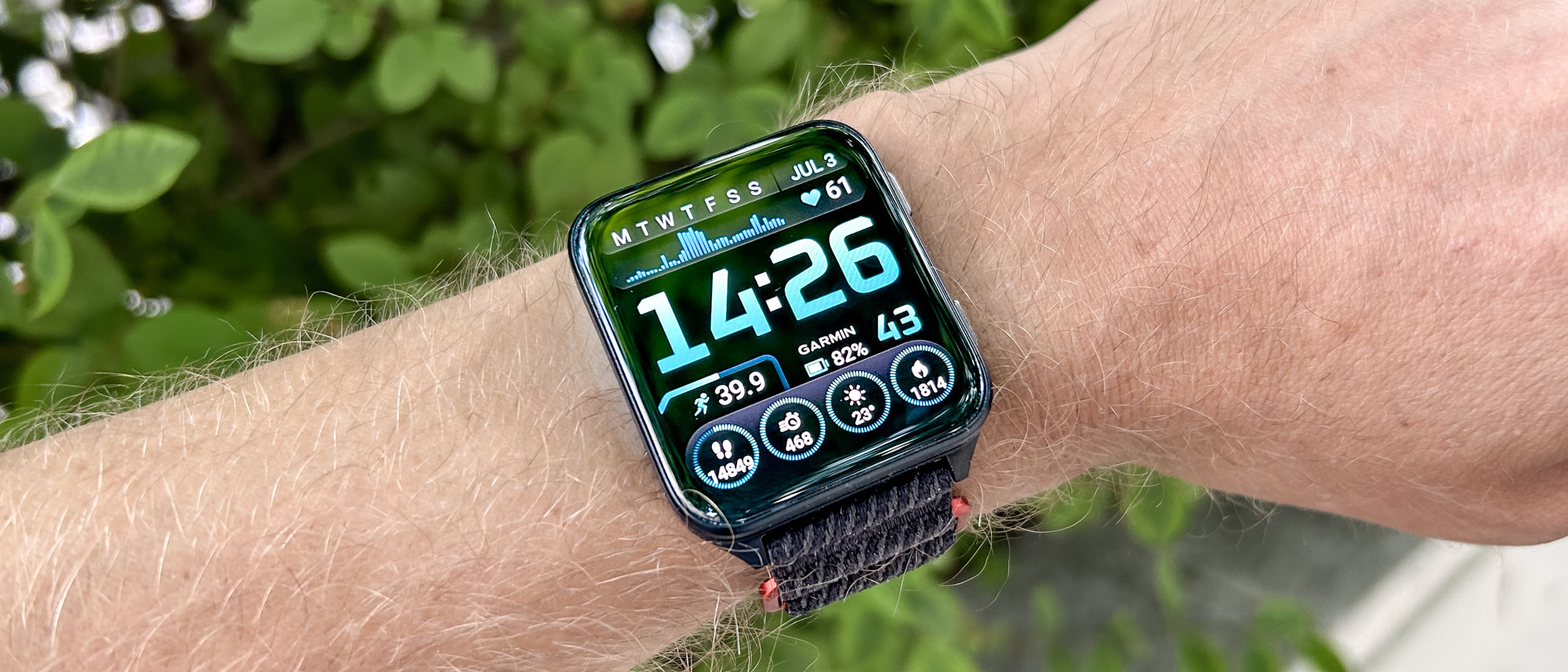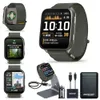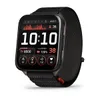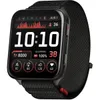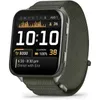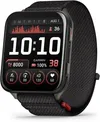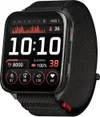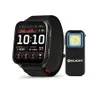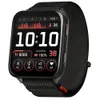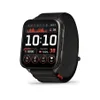Tom's Guide Verdict
The Garmin Venu X1 offers nearly all of Garmin’s top sports tracking and navigation features in a sleek, smartwatch-style design with a large and impressive AMOLED display. It’s a sportier alternative to the likes of the Apple Watch Ultra 2, but it still lacks some key smart features.
Pros
- +
Large, bright display
- +
Thin and lightweight design
- +
Impressive sports tracking
Cons
- -
Short on smart features
- -
No dual-band GPS
- -
Short battery life
Why you can trust Tom's Guide
The Garmin Venu X1 has most of the same features as the best Garmin watches, like the Forerunner 970 and Fenix 8, but a completely different design, with a vast AMOLED screen and thin, square case.
It occupies its own niche within the Garmin range and looks built to rival the Apple Watch Ultra 2 in particular, offering better sports features and a slimmer design.
However, the Venu X1 can’t match the smarts of the Apple Watch, and its short battery life might put off traditional Garmin users.
It’s an intriguing addition to Garmin’s range, and I’ve enjoyed using the Venu X1 as my main running watch during marathon training. In my Garmin Venu X1 review, I’ll cover its pros and cons and compare it to other watches like the Apple Watch Ultra 2 and the Garmin Forerunner 970.
Garmin Venu X1 review: Price and availability
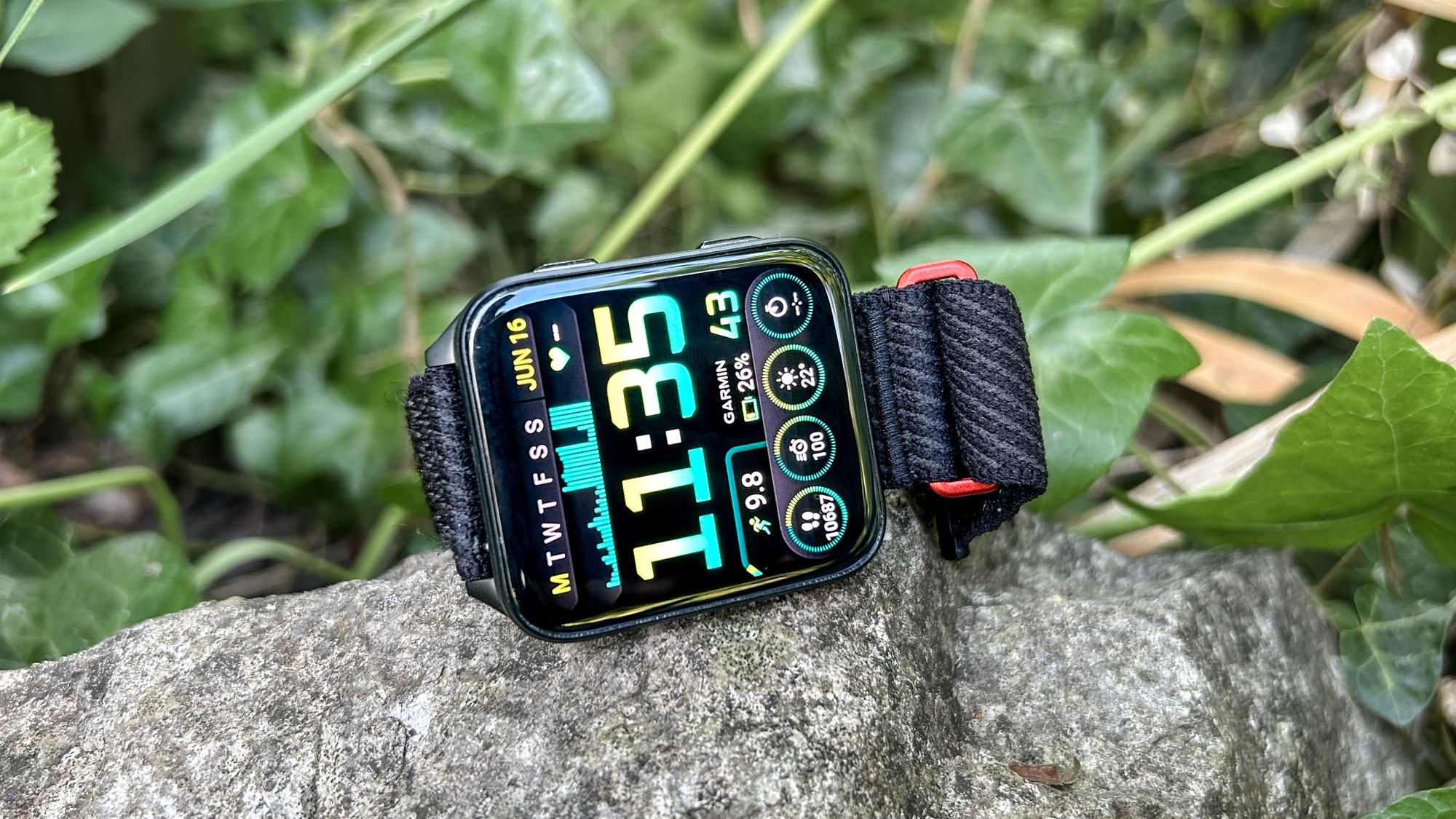
The Garmin Venu X1 launched in June 2025 and costs $799.99 in the U.S. and £679.99 in the U.K., which is a little more expensive than the Garmin Forerunner 970 and considerably pricier than past Venu models like the Garmin Venu 3.
Garmin Venu X1 review: Specs compared
| Row 0 - Cell 0 | Garmin Venu X1 | Garmin Forerunner 970 | Apple Watch Ultra 2 |
Price | $799 | $749 | $799 |
Case size | 41 x 46 x 7.9mm | 47 x 47 x 12.9mm | 44 x 49 x 14.4mm |
Screen size | 2 inches | 1.4 inches | 1.9 inches |
Resolution | 448 x 486 pixels | 454 x 454 pixels | 410 x 502 pixels |
Screen material | Sapphire crystal | Sapphire crystal | Sapphire crystal |
Weight | 40g | 56g | 61g |
GPS battery life | 16 hours | 26 hours | 12 hours |
Smartwatch battery life | 8 days | 15 days | 36 hours |
Touchscreen | Yes | Yes | Yes |
Built-in flashlight | Yes | Yes | No |
Multi-band GPS | No | Yes | Yes |
Garmin Venu X1 review: Design and display
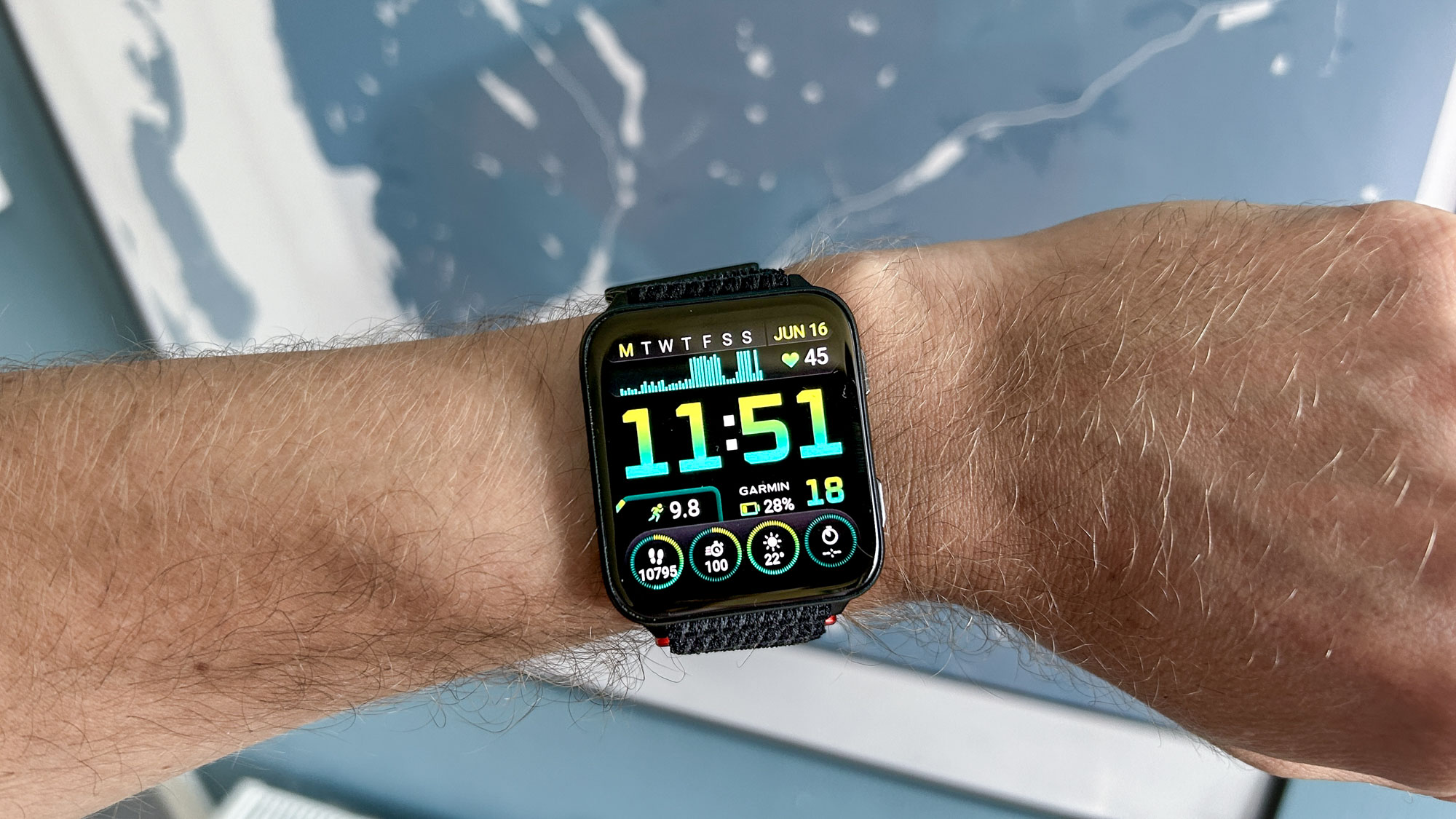
The Garmin Venu X1 is available in two colors — black and moss green — both of which come with a 24mm ComfortFit nylon band.
There are two standout features of its design: the first of which is the 2-inch AMOLED screen. It’s huge and very bright — I’ve actually reduced the brightness to its minimum setting, and it’s still clear to read in all conditions.
Get instant access to breaking news, the hottest reviews, great deals and helpful tips.
It’s the biggest screen I’ve had on my wrist. However, the Venu X1 doesn’t feel like a large watch, which is because of its second standout design feature, which is the fact it’s just 7.9mm thick.
That’s considerably thinner than the Apple Watch Ultra 2 and Forerunner 970, and with the Venu X1 also being a lightweight watch at 40g with its nylon band, it’s extremely comfortable to wear 24/7.
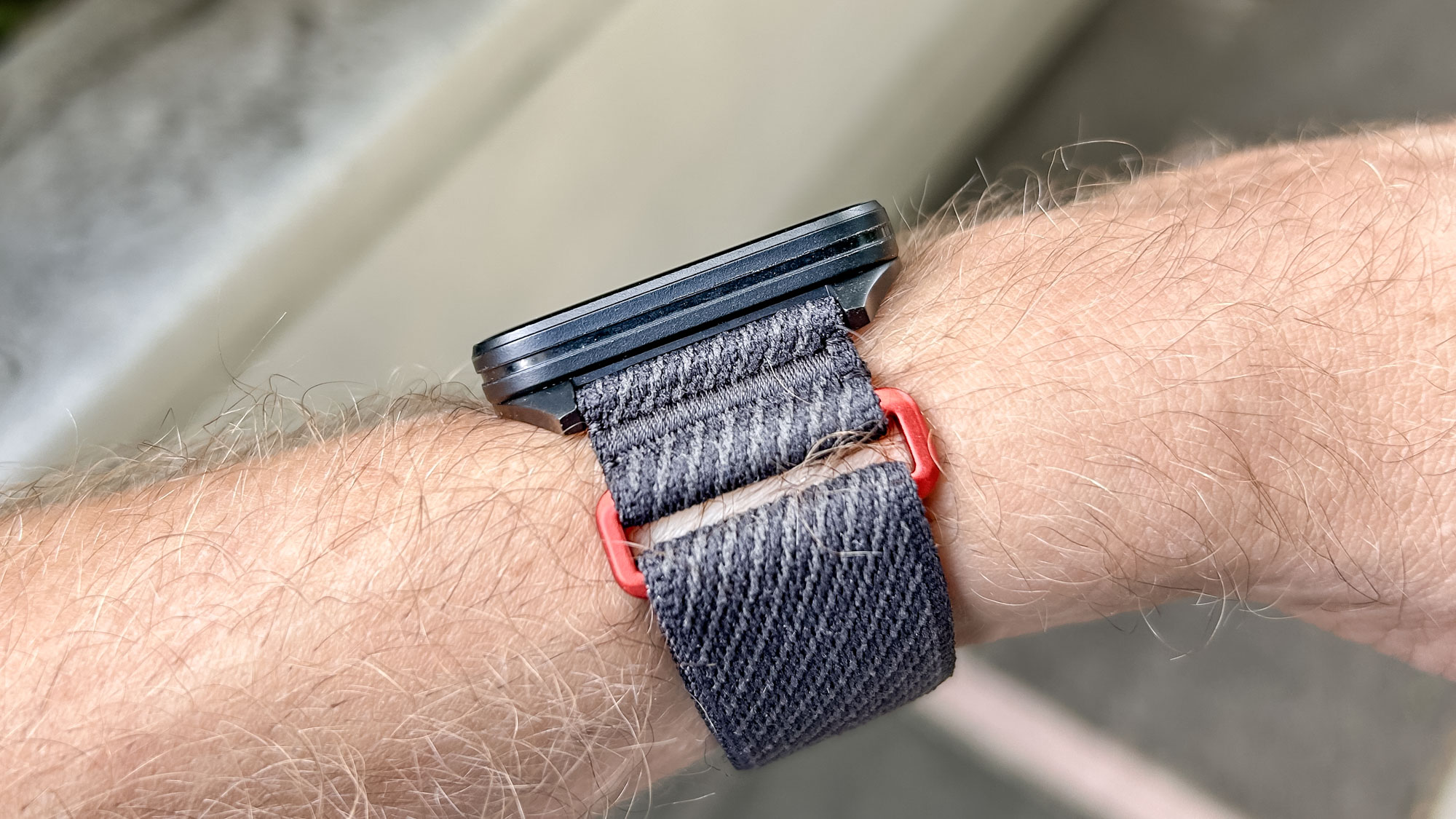
Despite being thin, the Venu X1 feels very sturdy thanks to the titanium caseback and sapphire crystal screen, with the rest of the thin 41 x 46mm case made from durable plastic.
On top of the watch is a built-in flashlight similar to the ones on the Garmin Fenix 8 and Forerunner 970 watches. It’s a very handy feature with four brightness settings and a red mode.
It has two buttons as opposed to the five you usually get on Garmin sports watches, which means you mostly use the touchscreen to navigate the Venu X1’s menus.
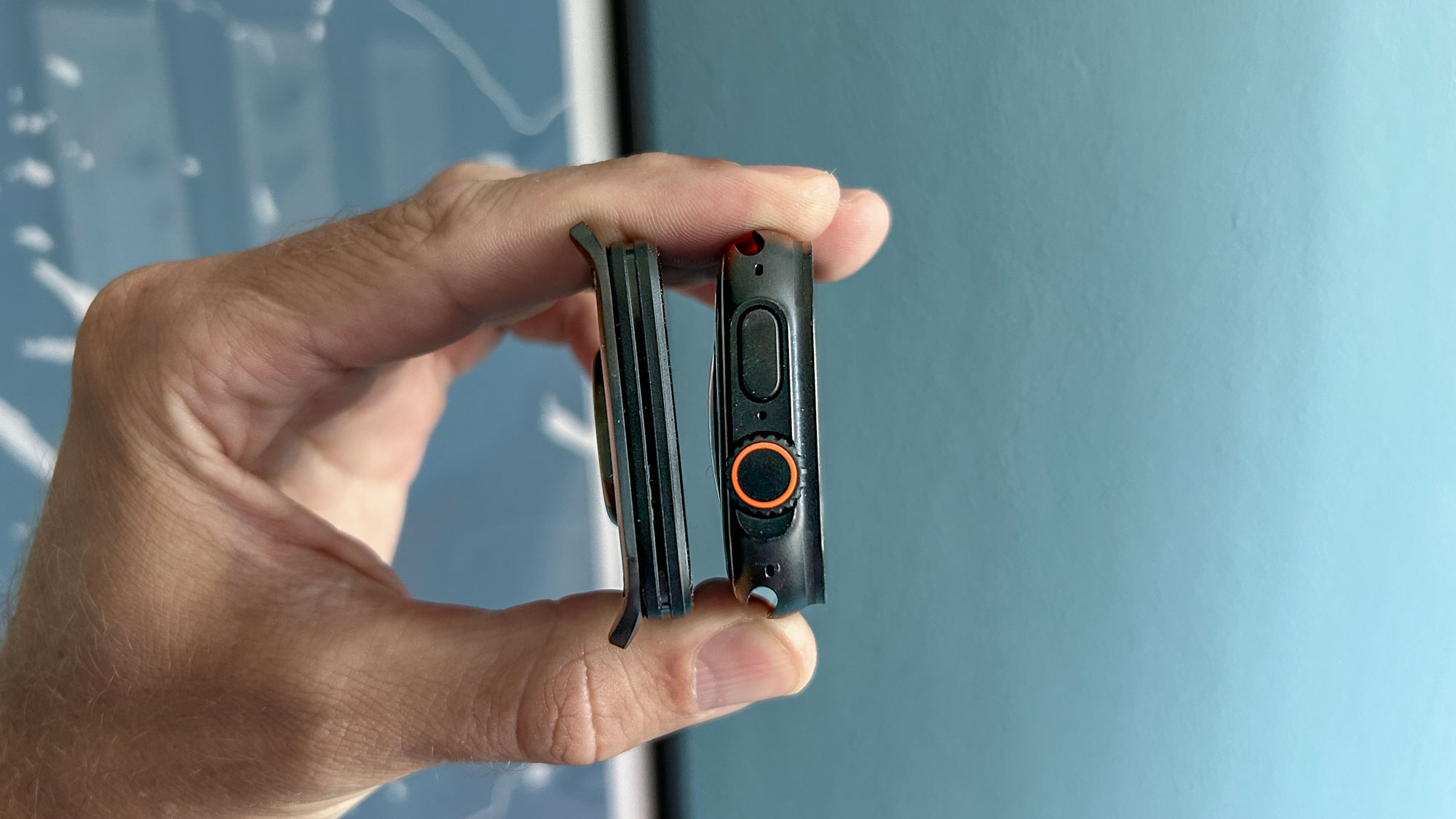
The Venu X1 has Garmin’s latest Elevate v5 heart rate sensor, along with a pulse oximeter and barometer, and you can connect external sensors, like heart rate chest straps and cycling power meters, via Bluetooth and ANT+.
One thing it doesn’t have is a GPS chipset capable of multi-band GPS tracking, which is more or less standard across the Garmin Forerunner and Fenix ranges.
This is the most accurate GPS mode, and while the all-systems tracking you get on the Venu X1 is still very good, it’s a shame it doesn’t offer multi-band as well, which can be a useful upgrade when running in city centers in particular.
The Venu X1 has a 5ATM waterproof rating and is suitable for pool and open-water swimming, but it’s not a watch you can use for diving, unlike the Fenix 8 and Apple Watch Ultra 2.
Garmin Venu X1 review: Sports tracking and training analysis
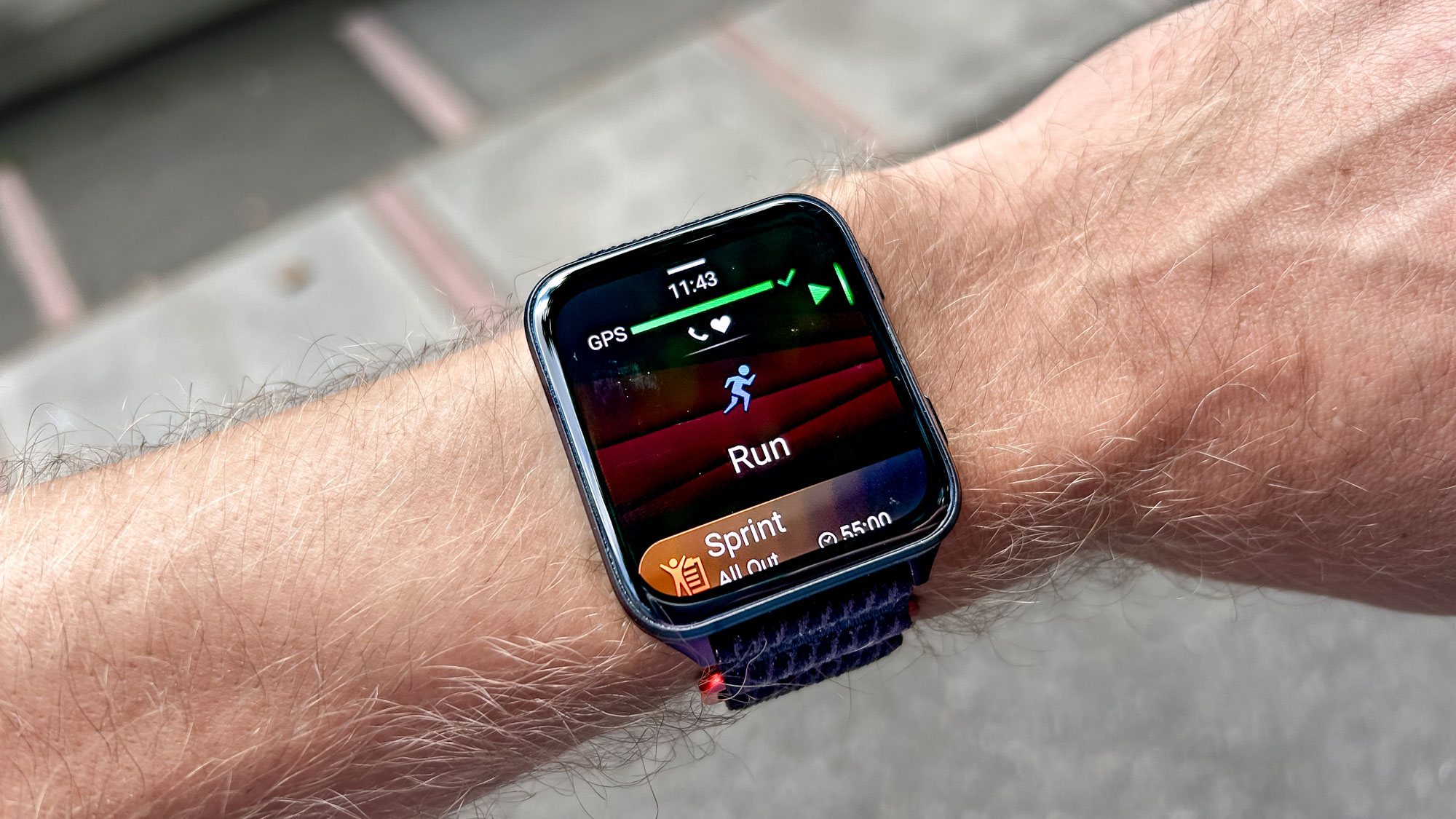
The Venu X1 is packed with sports modes, including golf, which looks amazing on the large AMOLED screen. It has Garmin’s track run mode, dedicated triathlon and swimrun modes, and a host of winter sports and adventurous activities.
All of these sports modes are fully customizable with regard to the data on show, and the bright display makes it easier to see your stats than ever.
The relative lack of buttons compared with other Garmin watches means that you have to use the touchscreen to navigate through your data screen during activities, which can be tricky when your fingers are sweaty, or it’s raining, or if you’re wearing gloves.
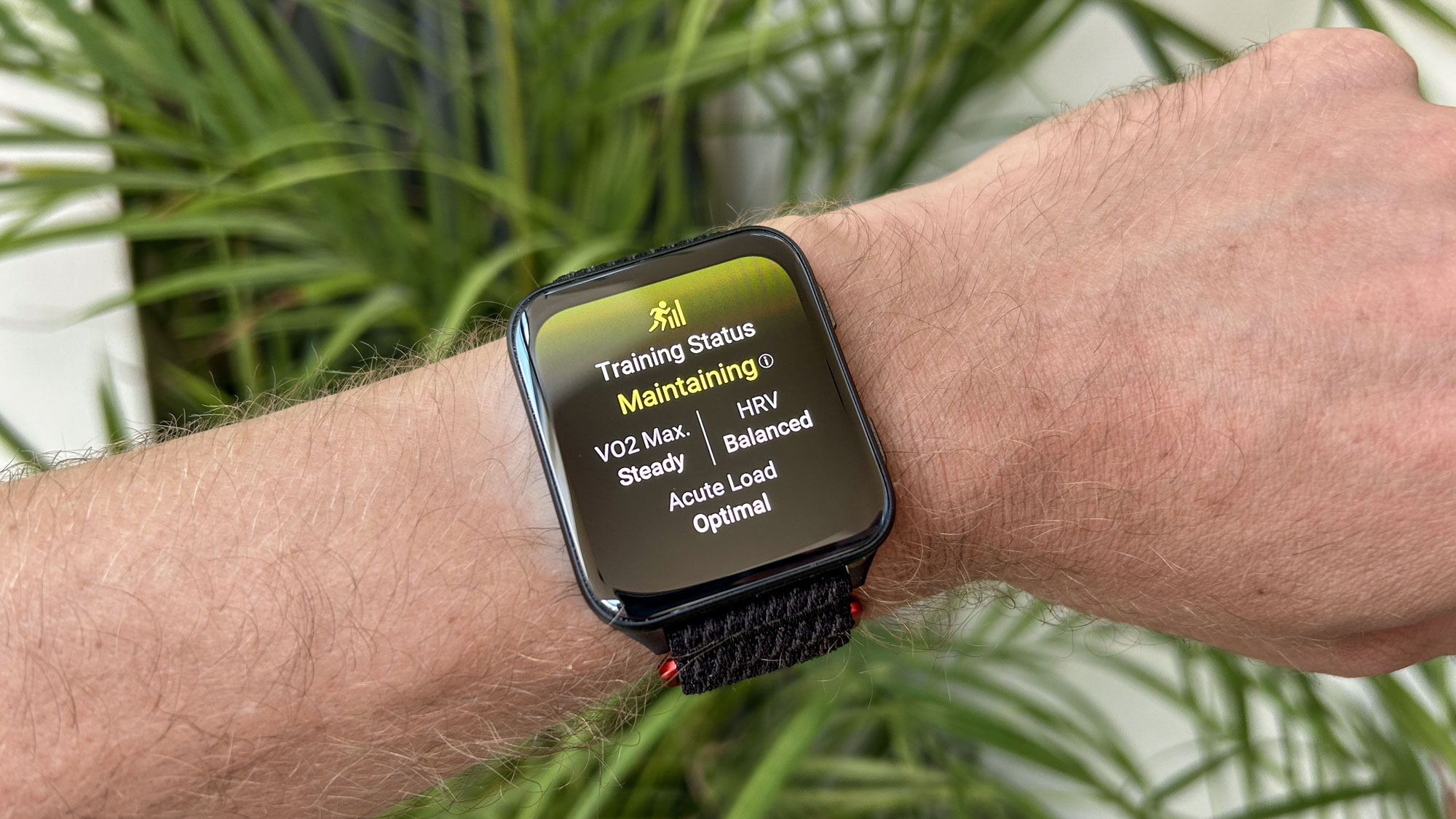
At launch, the Venu X1 was missing a couple of Garmin’s new training analysis features, namely running tolerance and running economy measurements, but these have been added to the watch in a software update.
These updates mean that the Venu X1 has all of Garmin’s best sports tracking and training analysis tools (aside from multi-band GPS), making it just as capable as the Forerunner 970 and Fenix 8 and more feature-rich than anything available from other brands.
Garmin Venu X1 review: GPS and heart rate accuracy
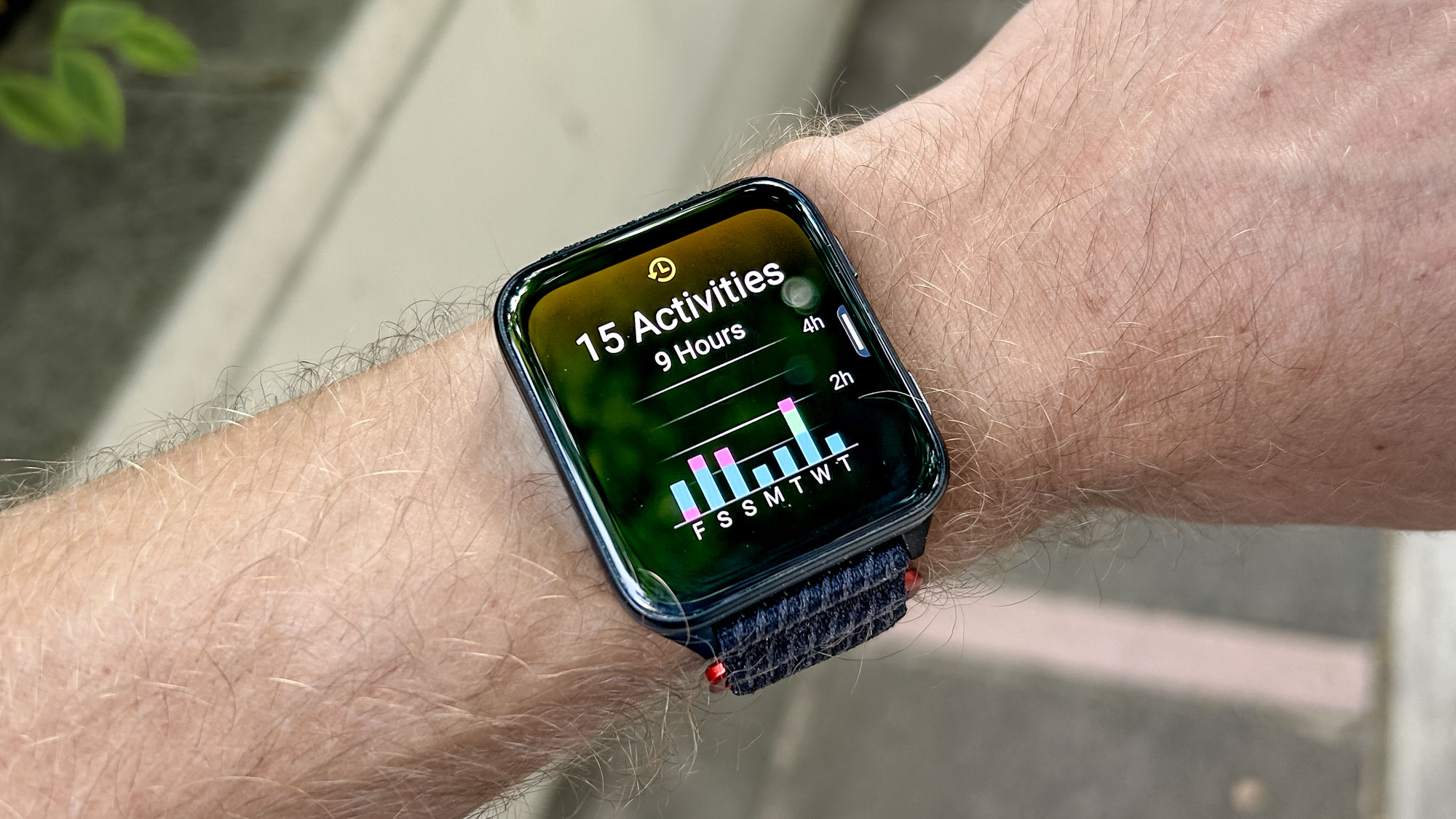
The decision not to offer multi-band GPS on the Venu X1 is a strange one from Garmin, since it’s available on cheaper sports watches like the Forerunner 570.
Whatever the reason, I still got very accurate GPS tracking from the Venu X1 during testing from the all-systems GPS setting, which mostly matched multi-band watches like the Forerunner 970 and Apple Watch Ultra 2 when I compared them directly during races and other runs.
There are occasions when multi-band GPS will offer an edge, though, especially in city centers when running under tall buildings.
I’ve run the London Marathon several times and have noticed that multi-band watches are more accurate in the area around Canary Wharf, for example.
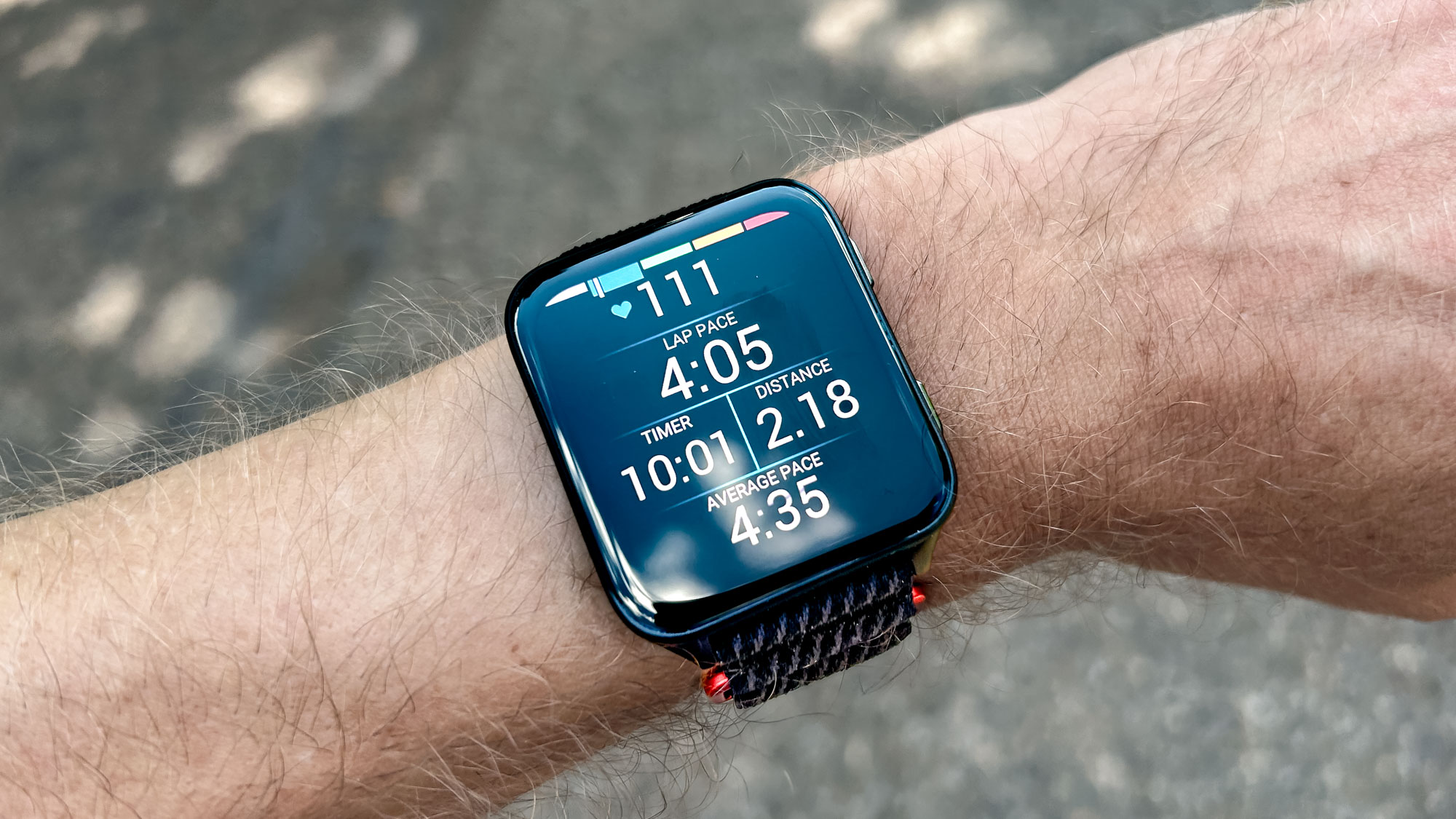
Overall, the GPS accuracy on the Venu X1 has been great for me, and so has the heart rate accuracy, which I’ve checked against the readings from a Garmin HRM600 chest strap during my runs and other workouts.
That’s generally been the case for me when using watches that have Garmin’s Elevate v5 sensor, which I find reliable and accurate.
You might still want to pair the Garmin HRM600 strap with the Venu X1, however, because you need it to unlock the step speed loss and running economy measurements on the watch.
Garmin Venu X1 review: Smart features
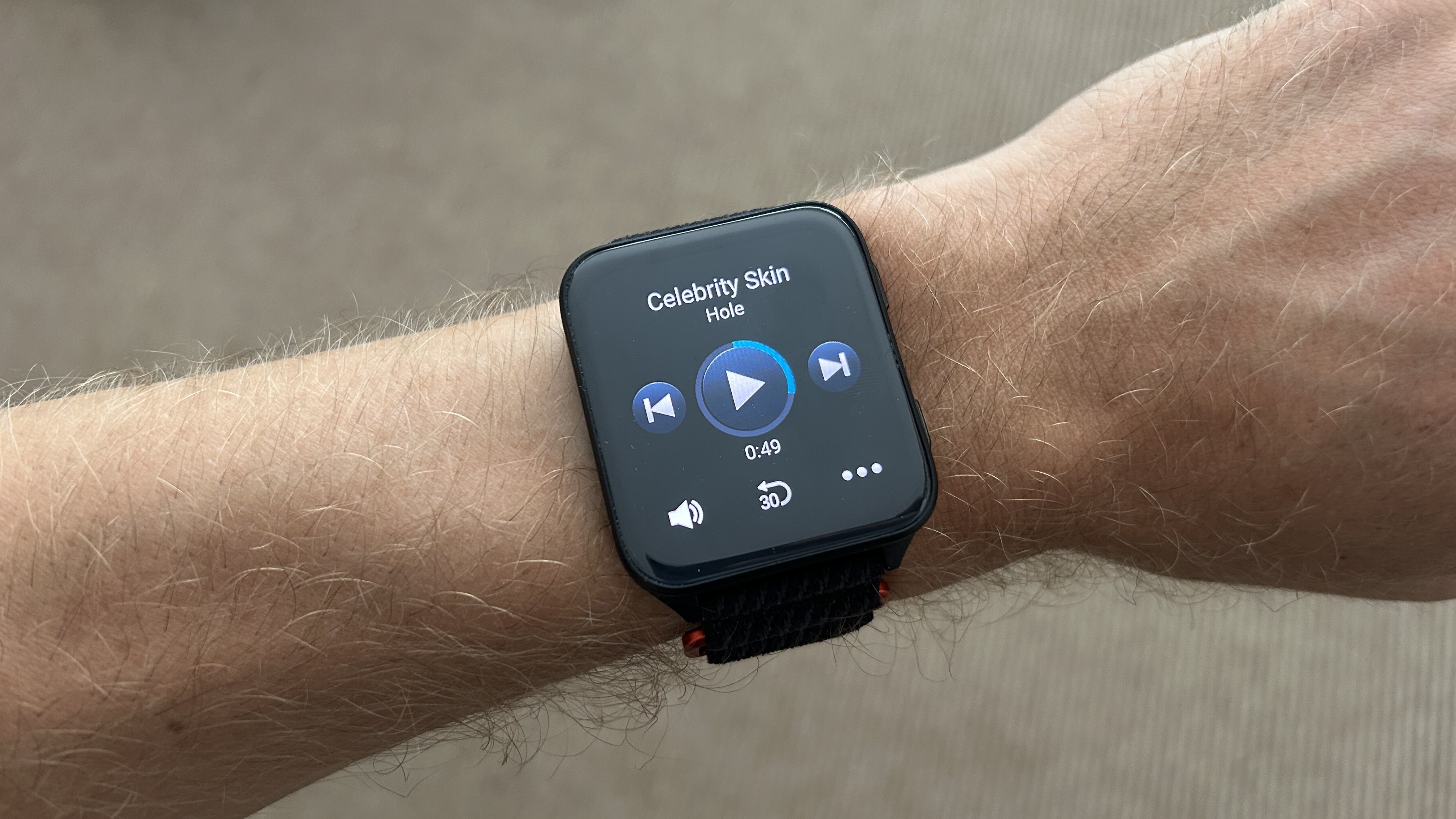
The Garmin Venu X1 has the look of a smartwatch and offers some useful smart features, including NFC payments and music storage with the ability to sync with Spotify, Amazon Music and Deezer premium accounts.
It also has access to the Garmin Connect IQ apps store, which contains more watch faces, data fields and a few useful apps.
However, it falls well short of the smarts you get on ‘true’ smartwatches like the Apple Watch Ultra 2 or Samsung Galaxy Watch Ultra, which offer cellular connectivity, much better app stores, and are more useful day-to-day with things like train and plane ticket storage.
Garmin’s smart features haven’t really moved on in a couple of years, and I think if they really want to take the fight to the likes of Apple, they will need cellular connectivity at least.
Garmin Venu X1 review: Navigation
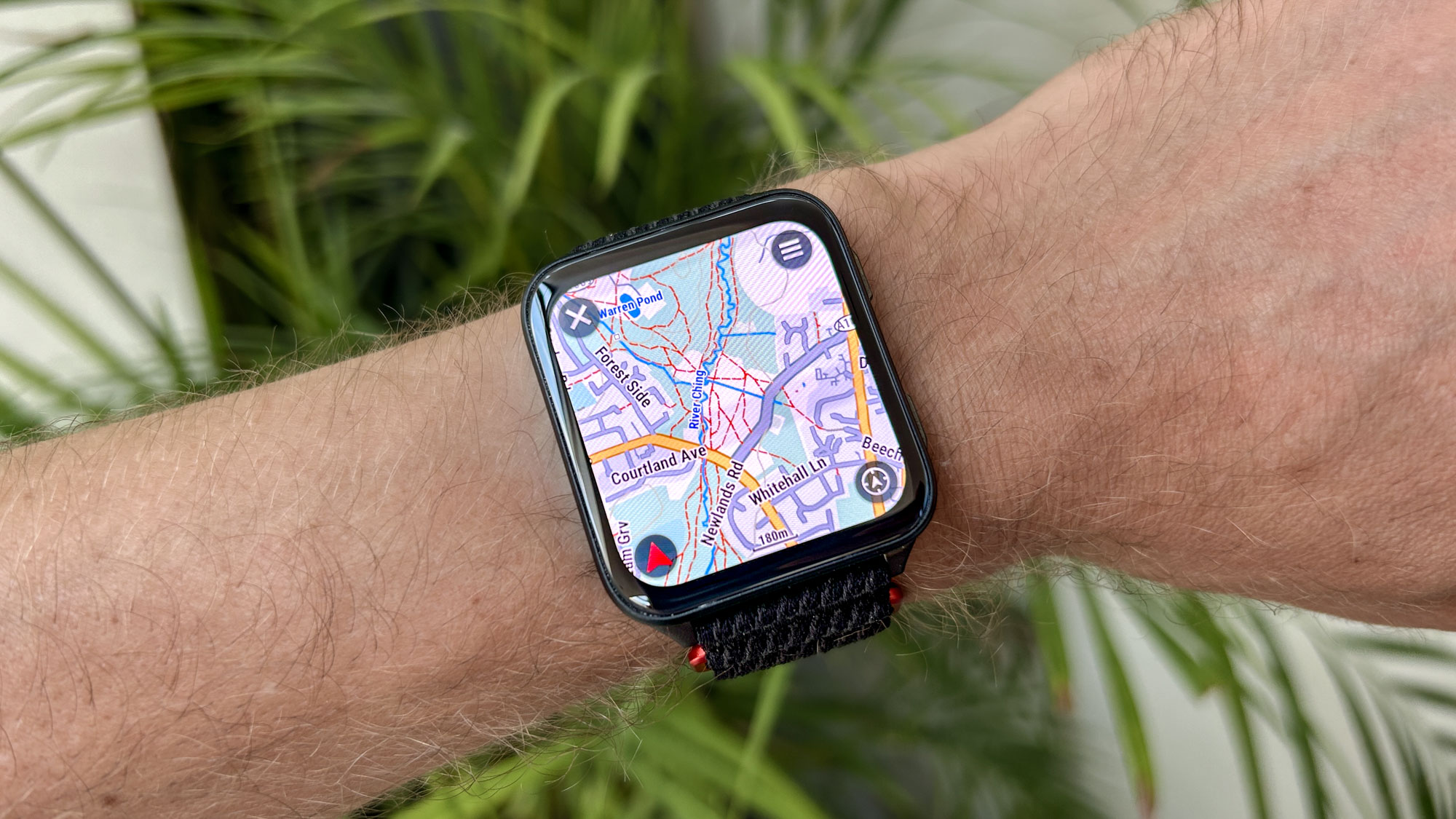
The Venu X1 has Garmin’s routable offline maps on board, which means you can create and follow routes on the watch itself.
These maps look fantastic on the large, square display, and within sports modes, you can see several stats as well as your map.
Along with the detailed maps, there are tools like an elevation plot for your routes and ClimbPro, which breaks out the climbs and descents on your routes so you can view them individually.
This is very handy during runs, hikes and bike rides because you can see how much left of climbing you have to go in particular and pace yourself accordingly — there’s nothing worse than pushing to what you think is the crest of a climb, only to turn a corner and see a lot more uphill to go.
Garmin Venu X1 review: Activity and sleep tracking
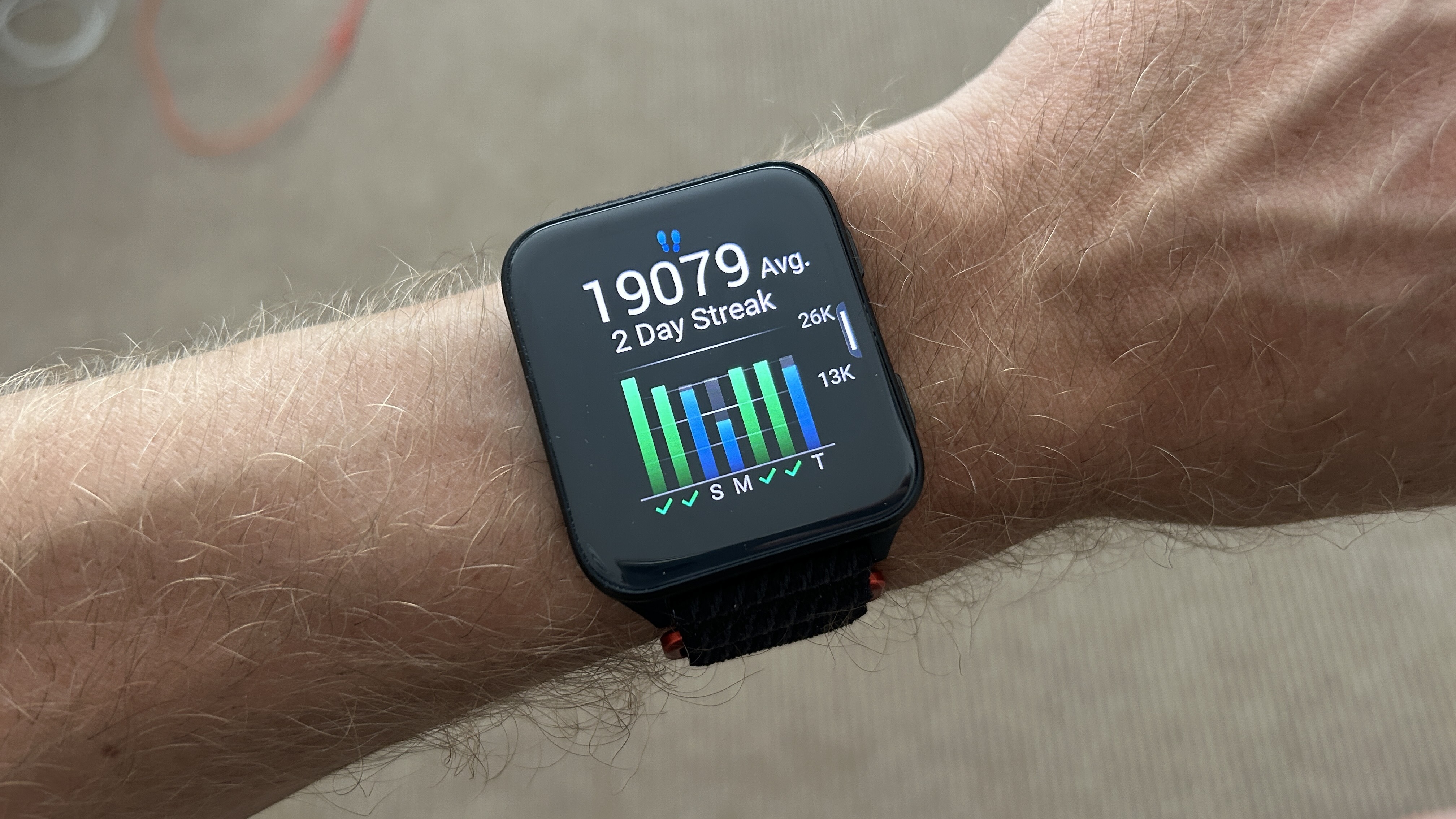
The Garmin Venu X1 tracks every aspect of your day and night, recording steps, active minutes, calories, floors climbed, stress throughout the day and your sleep and heart rate variability overnight.
All the data is presented well on colorful graphs, and you get advice on how much sleep you need each night, too — right now I’m being told to get more than usual tonight, after poor sleep last night following an evening race (and some ill-advised post-race celebrations).
You also get a breakdown of your day in the Evening Report, which you can customize the timing of, along with the information shown. This can include things like your workouts, sleep recommendations and a weather forecast for the following day.
Garmin Venu X1 review: Battery life
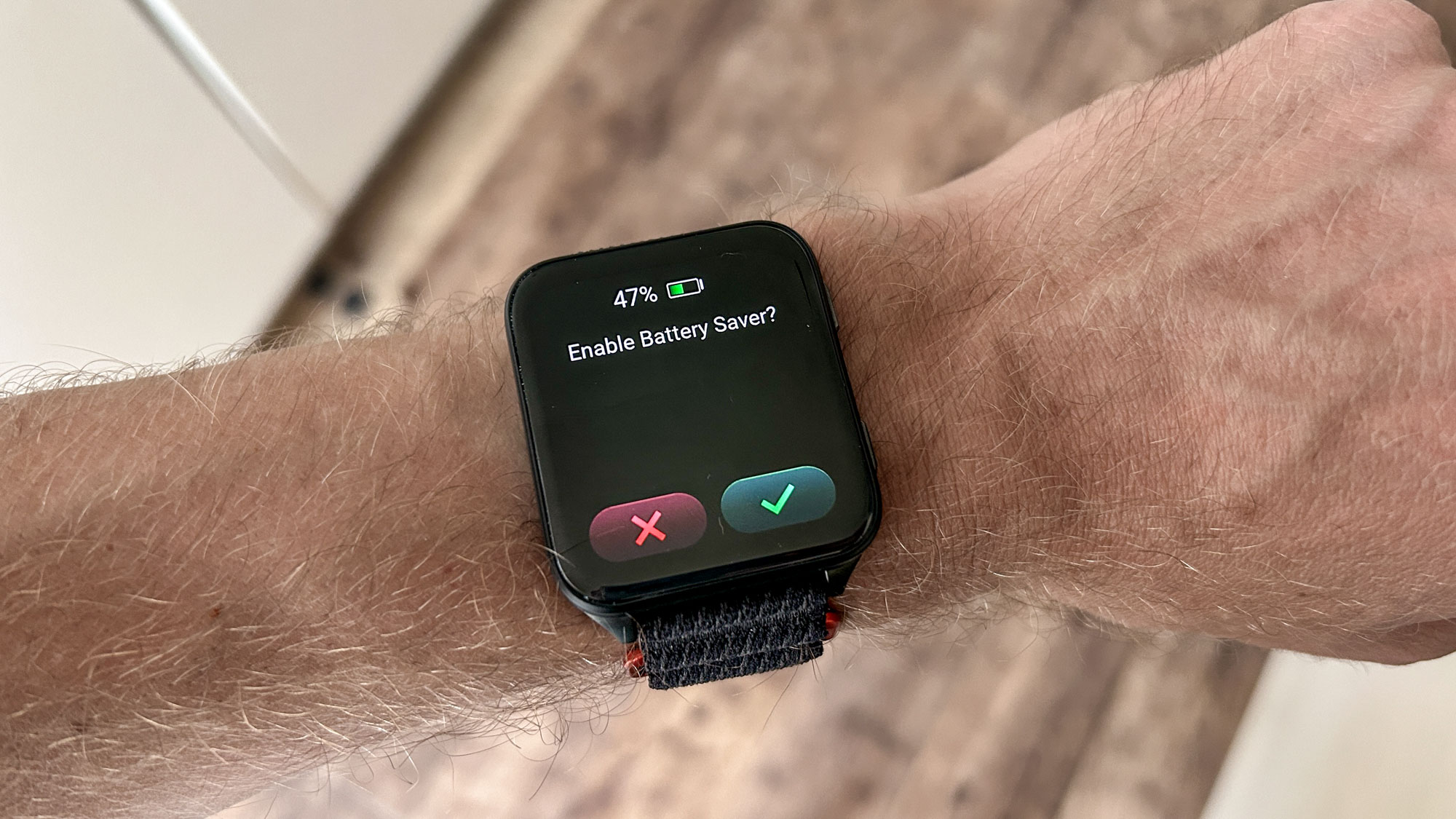
As you might expect, the big, bright screen on the Venu X1 hits battery life hard, and Garmin lists the battery life as two days in always-on mode and up to eight days with the screen set to raise-to-wake.
Early on in my testing, the watch was falling short even of those numbers, needing to be charged every day. But since a software update, it’s now actually exceeding them, usually lasting me just over two days in always-on mode with around an hour of running a day, plus indoor workouts.
Long activities that use GPS hit battery life hard, though, with the Venu X1 offering 14 hours of all-systems GPS tracking. It’s enough for most individual activities outside of epic hikes and ultramarathons, but shorter than most Garmin watches.
If you look at other top AMOLED Garmins like the Forerunner 970 or Fenix 8, you can expect at least five days of battery life in always-on mode, and 10 days with the largest 51mm Fenix 8.
Compared with other smartwatches, the Venu X1 matches the Apple Watch Ultra 2 and Samsung Galaxy Watch Ultra, and outlasts the Apple Watch Series 10. In raise-to-wake mode, it lasts significantly longer than all three, but as mentioned above, it isn’t as smart as those devices.
Should you buy the Garmin Venu X1?
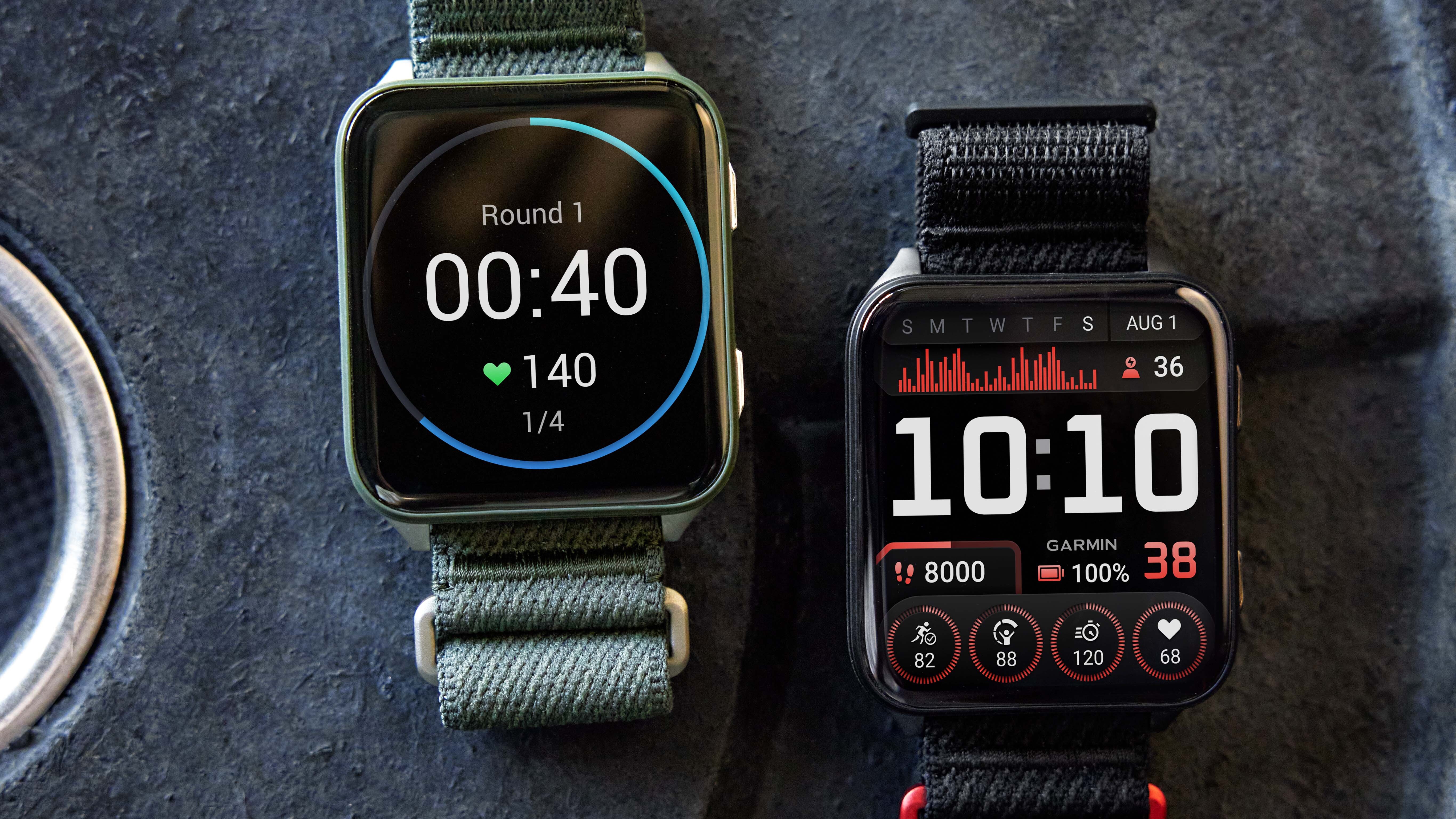
I recently reviewed the Garmin Forerunner 970 and felt it was a clear winner as the best sports watch available, with only the Garmin Fenix 8 a significant rival.
However, the Garmin Venu X1 has grown on me substantially during testing. It’s a genuine alternative to those watches if you prefer the larger display and lightweight, thin design over long battery life, with the only real other downside being the lack of multi-band GPS.
However, when compared to true smartwatches, the Venu X1 suffers from the same problem as the Forerunner and Fenix range, in that it lacks some key smart features on Apple and Android devices, like cellular connectivity.
I do like that Garmin has gone for something quite different with the Venu X1’s design, and it could well win over some new fans and convert some traditional Garmin users. I might even fall into the latter camp myself.

Nick Harris-Fry is an experienced health and fitness journalist, writing professionally since 2012. He spent nine years working on the Coach magazine and website before moving to the fitness team at Tom’s Guide in 2024. Nick is a keen runner and also the founder of YouTube channel The Run Testers, which specialises in reviewing running shoes, watches, headphones and other gear.
Nick ran his first marathon in 2016 and became obsessed with the sport. He now has PBs of 2hr 25min for the marathon and 15min 30sec for 5K. Nick is also a qualified Run Leader in the UK.
Nick is an established expert in the fitness area and along with writing for many publications, including Live Science, Expert Reviews, Wareable, Coach and Get Sweat Go, he has been quoted on The Guardian and The Independent.
You must confirm your public display name before commenting
Please logout and then login again, you will then be prompted to enter your display name.
